WEEK1-WHO AM I?
Introduction
Hi! I’m Sally from Shanghai, China. I’ve been training in fashion design since 2019, and I developed myself in materials and textiles within sustainability and humanistic design. I also have a background in online jewelry business and public welfare.
I am a big nature lover who is super interested in Environmental Design. I believe that design has the power to transcend boundaries. We designers act as a ‘point’ that radiates outwards, connecting different individuals regardless of man or nature to reach a collective consciousness. In the process, it provides the audience with emotional resonance and output channels, and promotes our understanding of and respect for the environment, society, and culture.
My artistic language uses ‘poor’ everyday materials such as plants, stones, food, paper, and fabrics as the medium of creation, focusing on the formal expression of the material properties of these mundane materials, discussing the sensitivity of the real, and the natural, and breaking down the stereotypes of the ways in which materials can be used. Through the use of different materials, colors, shapes, symbols, and textures, I can convey the power of healing through the use of ‘textiles’ as a medium of communication and output (Langlois, 2023).
My Works
Here are some of my previous works regarding recycled-materials, the relationship between man and nature, ecosystem and multi-sensory experience.
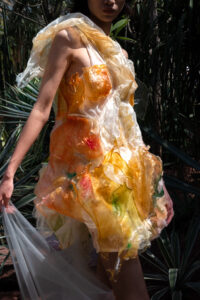
Figure 1: TOUCH, Sally Li, 2023
The sensation of touch is the actual foundation of human communication, connection, and health, and in today’s highly visual environment, contact with nature is becoming increasingly rare. TOUCH depicts the invisible and intangible tactile experiences in our lives using a translucent bio-fabric blended with various materials.
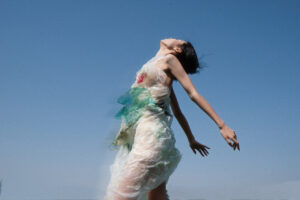
Figure 2: TOUCH, Sally Li, 2023

Figure 3:ZOOPHYTES, Sally Li, 2023
Through the study of nutrient cycles in wetland ecosystems, ZOOPHYTES attempts to exchange the attributes of plants (wetland flowers) and animals (clam shells and fish) with soft and hard materials, expressing a new ecosystem (symbiotic relationships, interactions, cycles) and future perspectives .
Figure 4:ZOOPHYTES, Sally Li, 2023
SIZE THE GAP sources plant colors, marble, and other natural materials from various aspects of Dali’s local environment and Bai traditional culture. It intends to mock the sophistication, templated batch procedures, and repeated rules of modern industrial products.
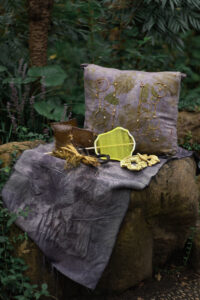
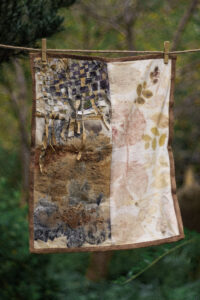
Figure 5:SIZE THE GAP, Sally Li, 2023
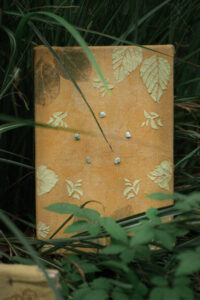
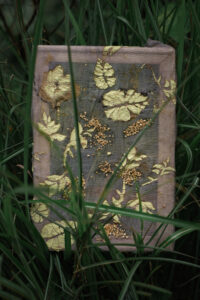
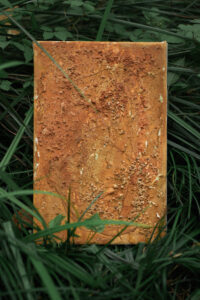
Figure 6:SIZE THE GAP, Sally Li, 2023
FLOWING uses plastic tubing to simulate the flow, static, and clogged states of water, eliciting a healing and sympathetic response from the viewer. The audience can also roam around and engage with the sound-activated lights, which respond to their voices to create visual effects.
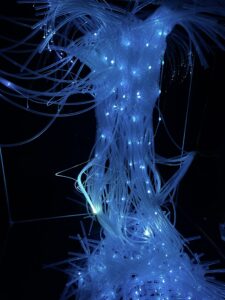
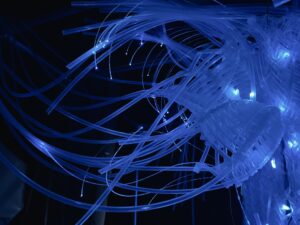
Figure 7:FLOWING, Sally Li, 2023
Bibliography
Langlois, G. (2023). How Textile Communicates. Bloomsbury Publishing.
Figure 1,2,3,4,5,6,7 are my own work.